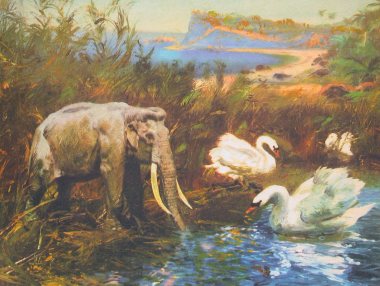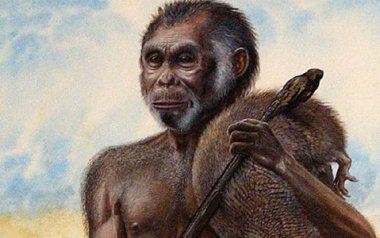
After Spinar/Burian: Leven in de oertijd (1974)

Flores man
When such colossi land on an island without predators, they will propagate very fast and soon there will be lack of food. In this case the smallest animals will have the advantage because they need less food than their big brothers. Reducing of size and even dwarf growth will be the consequence. In this way also dwarf mammoths and dwarf hippos are known. Island species are often fine examples of allopatric speciation because populations on islands are isolated from their relatives.
Know more?
Dwarf
elephant
Island faunas show a number of peculiarities. Many islands have species which occur nowhere else: these have evolved on site. They are called endemic species. These species, however, are very vulnerable to extinction. The great book 'The song of the Dodo'
 by
David Quammen is completely devoted to this subject.
by
David Quammen is completely devoted to this subject.
Know more?
The
Hobbit or Homo floresiensis